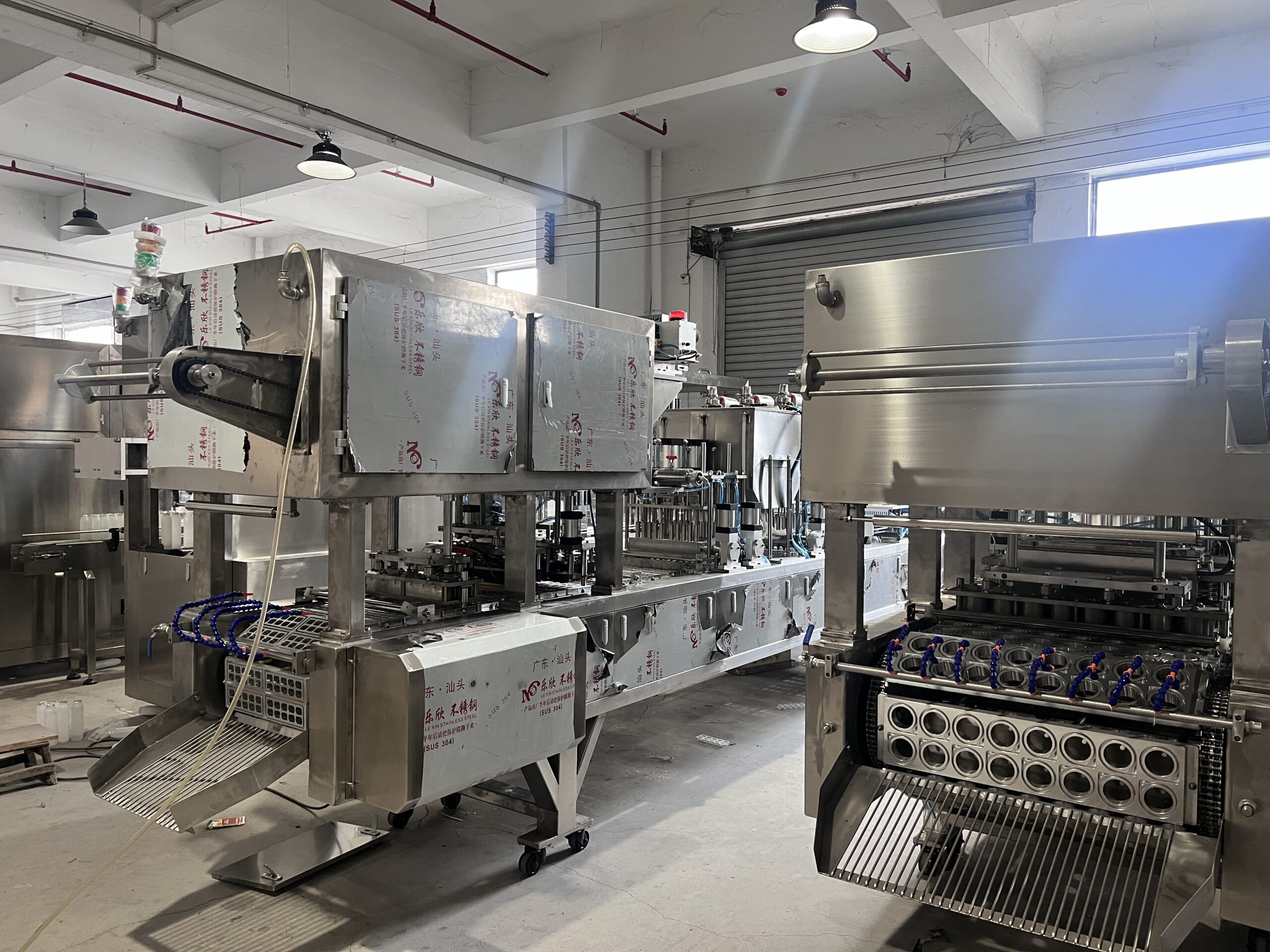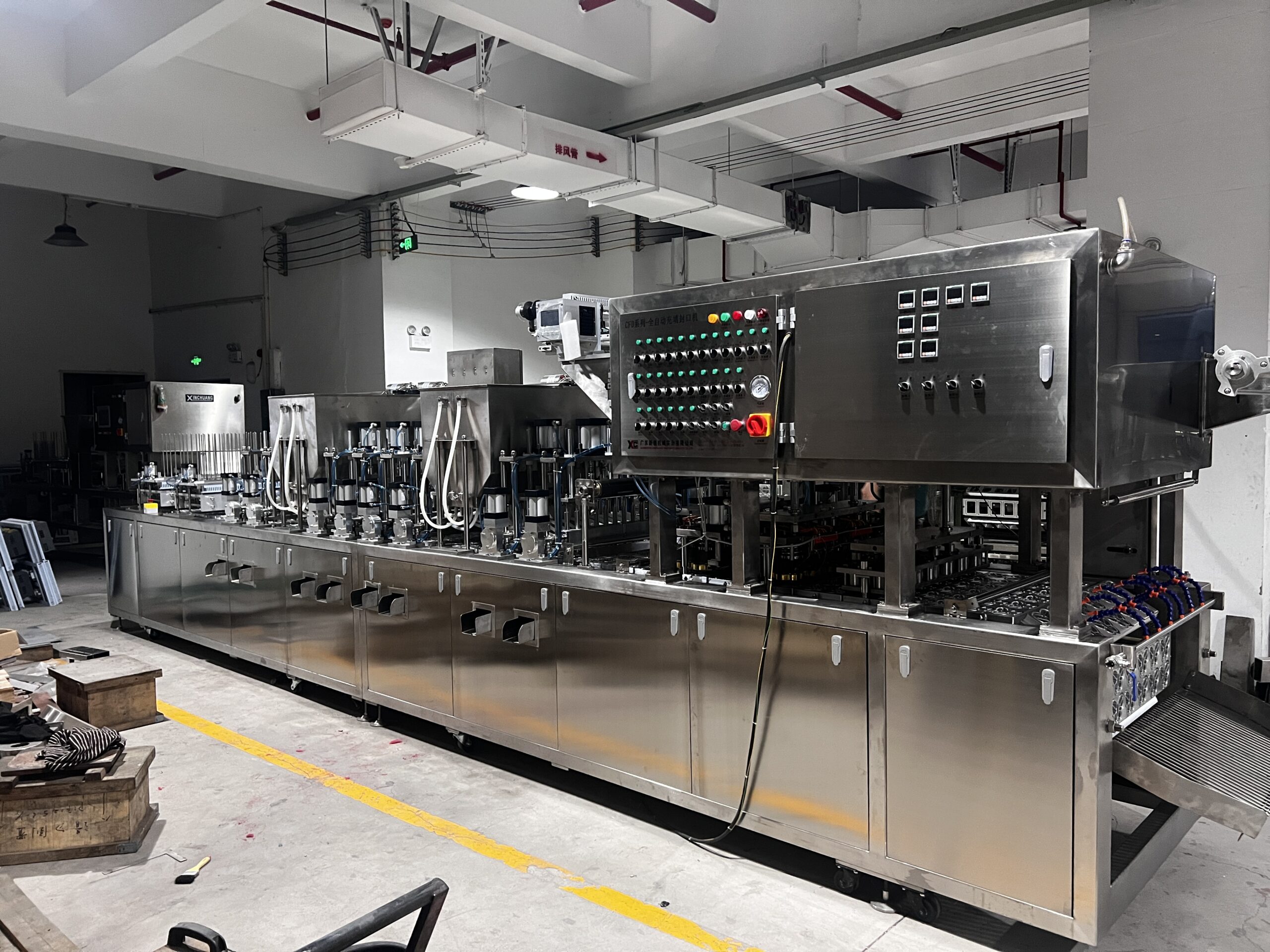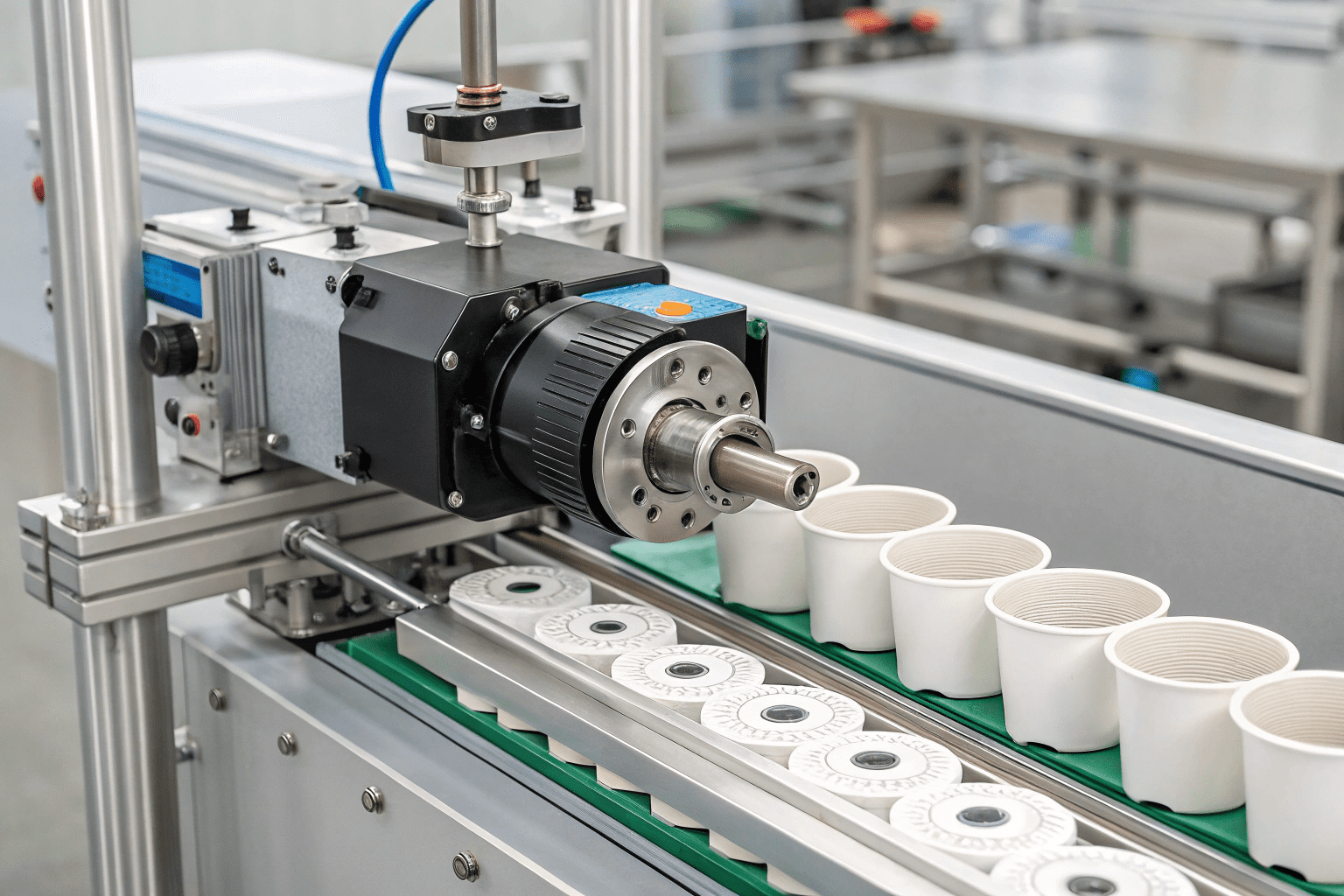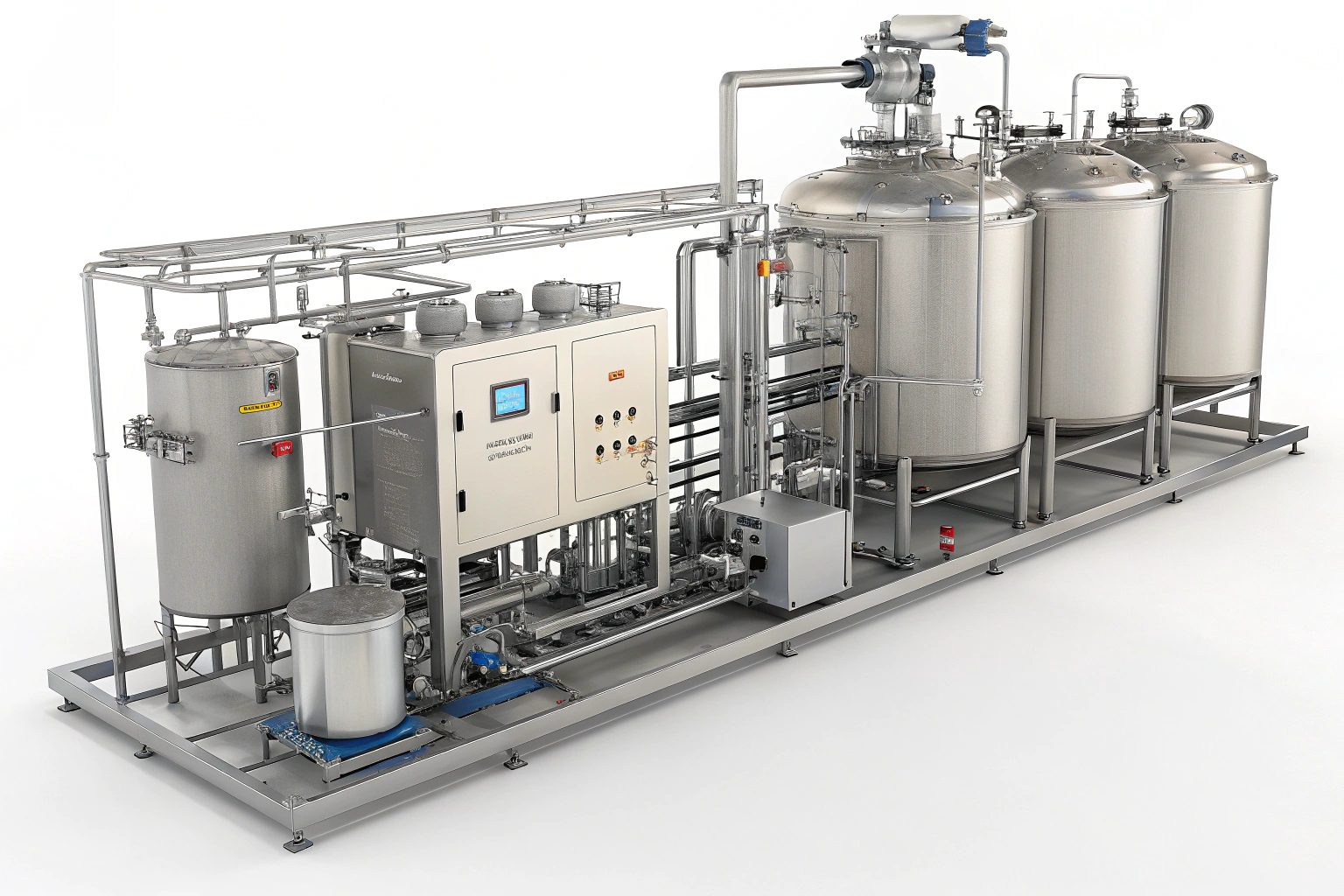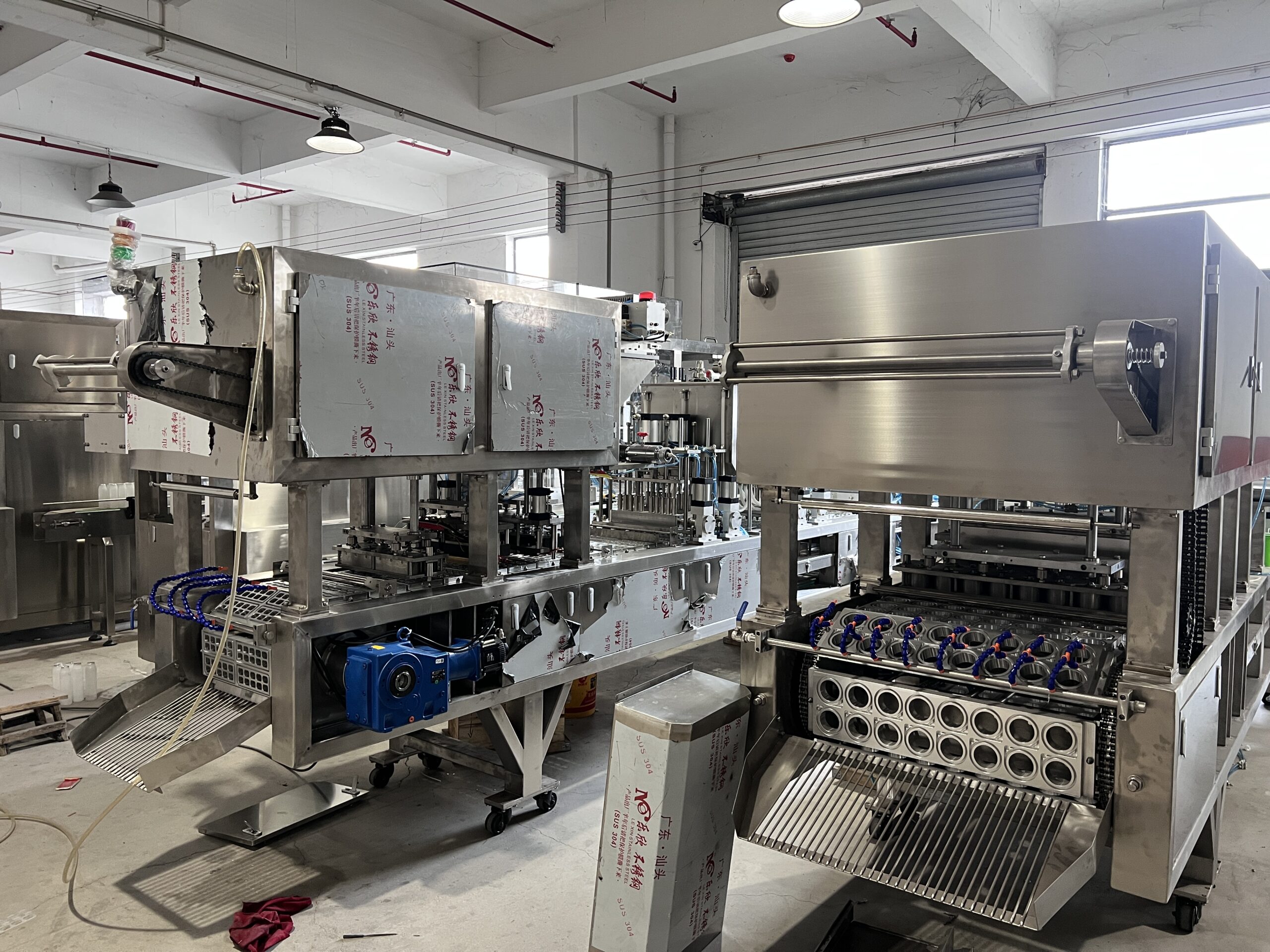How does a cup filling and sealing machine ensure consistent fill volumes?
Are you worried about uneven product fills? Inconsistent volumes can lead to wasted product and unhappy customers, hurting your bottom line. Modern machines offer precision control.
Cup filling and sealing machines ensure consistent fill volumes using precise mechanisms like piston fillers, where volume is set by stroke length, and sensors that monitor product levels. These systems accurately dispense the same amount of product into each cup, every time.
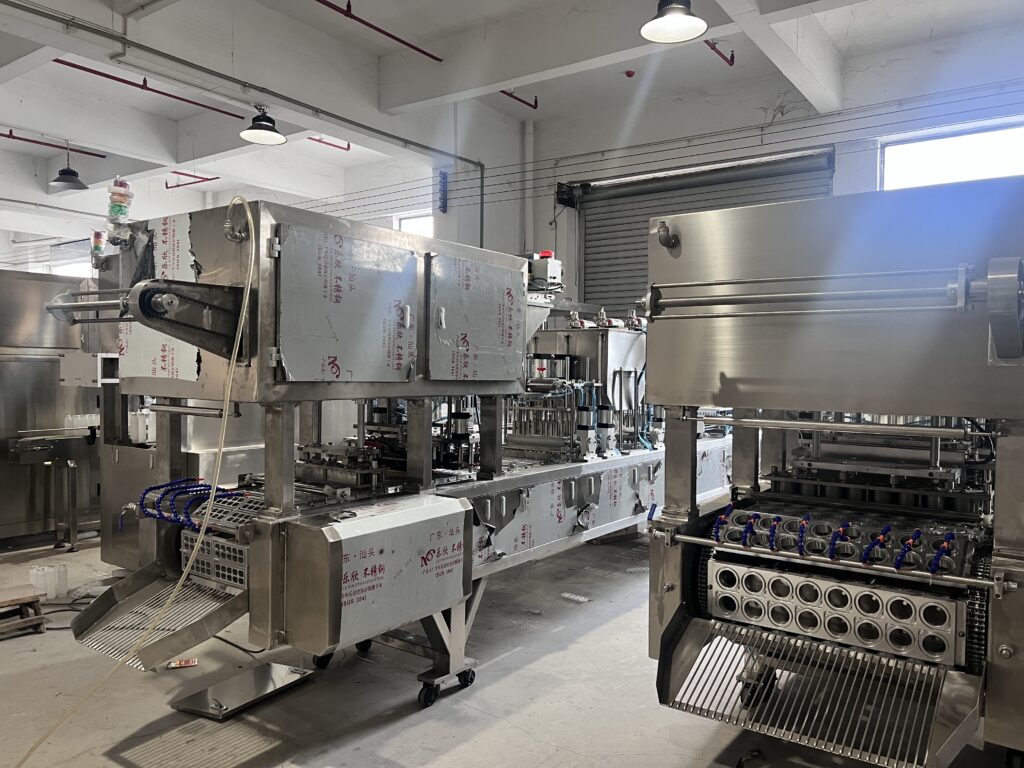
Getting the fill volume right is super important for any food business packing products like yogurt, juice, or jelly. It affects profit, packaging, and customer trust. Let’s look closer at how these machines achieve such amazing accuracy, making sure every cup meets your standards. We’ll explore the clever ways these machines measure and dispense your product reliably.
How does a volumetric filling machine work?
Confused about different filling technologies? Choosing the wrong type can cause production headaches and inconsistent products. Understanding volumetric filling helps you select the right equipment.
A volumetric filling machine works by dispensing a precise, pre-set volume of product into each container. Piston fillers are a common type, using a cylinder and piston stroke to measure and push out the exact amount needed.
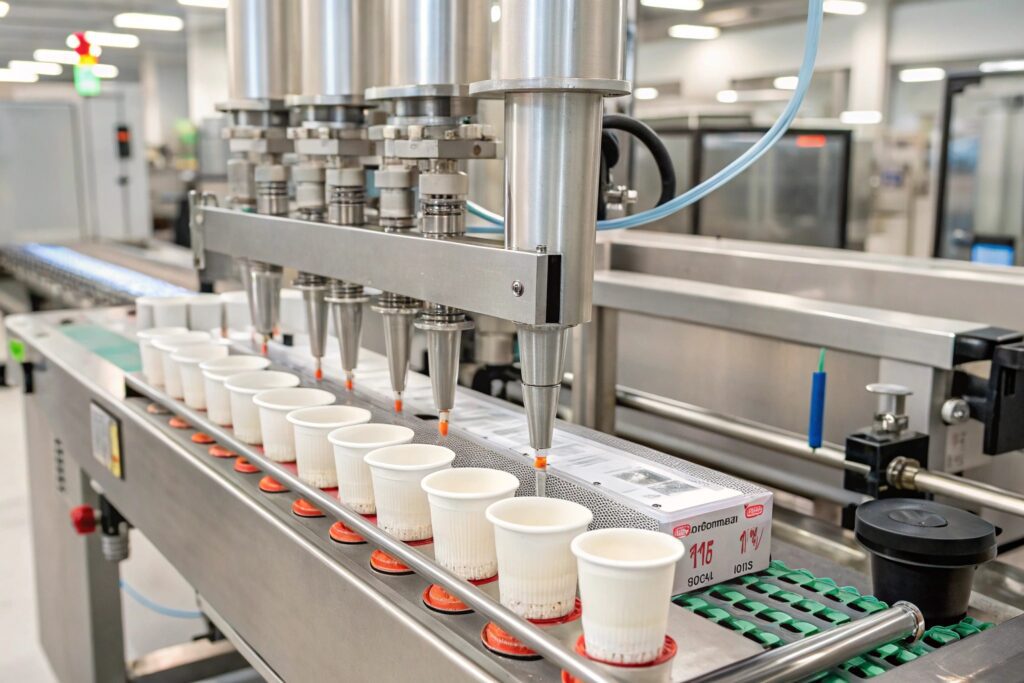
Volumetric filling is a popular method, especially for products where exact quantity is key. I’ve seen many clients benefit from its accuracy. Let’s dive deeper into how these systems measure out your product so precisely.
The Piston Filling Mechanism Explained
Think of a syringe – that’s basically how a piston filler1 works, just automated and much bigger! Each filling nozzle has its own cylinder and piston.
- Intake Stroke2: The piston pulls back, drawing product from a hopper (a storage tank) into the cylinder. The distance the piston pulls back determines the volume of product taken in.
- Discharge Stroke3: A valve switches position. The piston then pushes forward, forcing the measured product out of the cylinder, through the nozzle, and into the cup below.
It’s a simple, mechanical process, which makes it very reliable. We often use piston fillers at Xinchuang because they handle a wide range of products well, from thin juices to thick pastes.
Controlling the Volume
The key to consistency is controlling the piston’s stroke length – how far it moves back and forth.
- Stroke Length: A shorter stroke means less product is drawn in and dispensed; a longer stroke means more product. On our machines, this length is often adjustable.
- Adjustment: Simpler machines might use a handwheel that mechanically limits the piston’s travel. More advanced machines, especially fully automated ones, often use servo motors. Servo motors allow very precise, electronically controlled adjustments. Operators can sometimes even change the fill volume directly from a touchscreen interface, which is super convenient. As my insight mentioned, we precisely limit the piston’s rising height (the intake stroke) to guarantee the target volume is measured before dispensing.
Why Choose Volumetric?
Volumetric fillers4 offer distinct advantages, especially compared to methods like level filling5 (filling each container to the same height).
| Feature | Volumetric (Piston) | Level Filling |
|---|---|---|
| Accuracy Basis | Measures exact volume | Fills to a specific height in the container |
| Consistency | Very High, regardless of container shape variations | Good, but volume can vary if containers differ |
| Product Types | Liquids, creams, pastes, products with particulates | Mostly free-flowing liquids |
| Sensitivity | Less sensitive to container irregularities | Sensitive to container volume variations |
I remember a client producing yogurt; their cups sometimes had slight variations from the supplier. A level filler would result in different weights, but the volumetric piston filler ensured each cup had the correct amount of yogurt, keeping them compliant and their customers happy.
What is the fill volume of an automated filling machine?
Wondering if a filling machine has just one set volume? Believing this might limit your product ideas or lead to buying the wrong machine. The reality is much more flexible.
The fill volume of an automated filling machine isn’t a single fixed number. It’s typically an adjustable range (e.g., 50ml to 250ml) defined by the machine’s design and customized to the client’s specific cup size and product requirements.
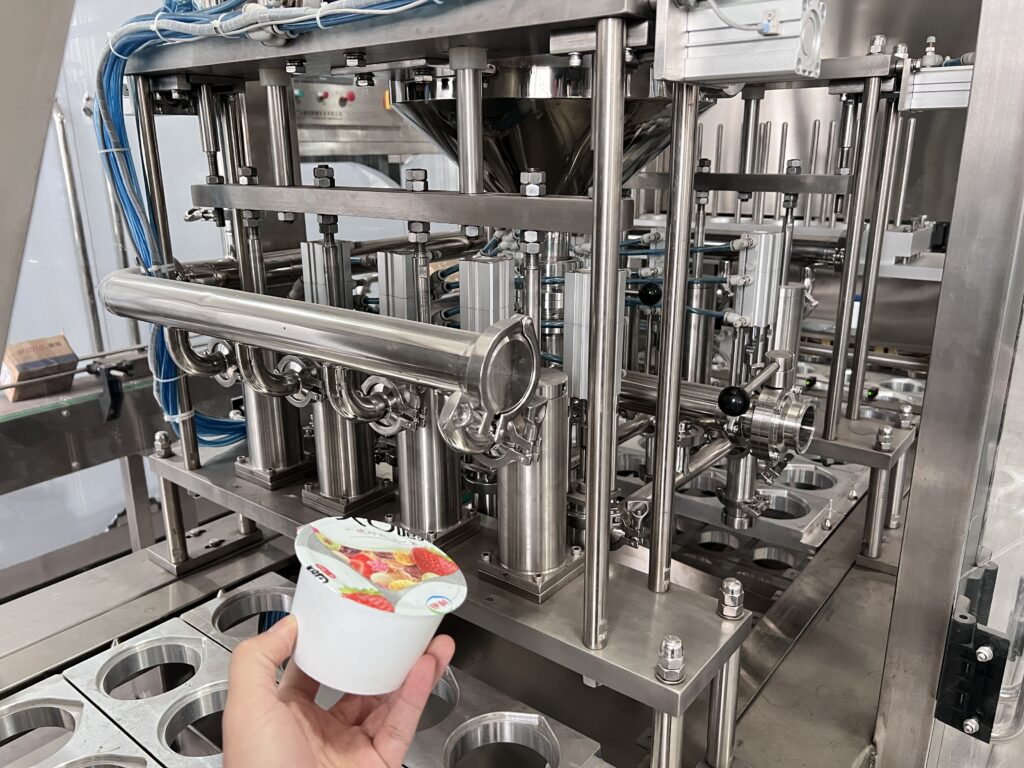
When people ask me about "the" fill volume, I always explain it’s more about the machine’s capability range. We design machines to meet specific needs. Let’s explore what determines this range and how we ensure accuracy across it.
Factors Defining the Fill Volume Range
Several things influence the minimum and maximum volume a machine can handle accurately:
- Machine Design: The core factor is the size of the filling system components, primarily the piston cylinder diameter and the maximum possible stroke length. A larger cylinder can dispense a larger volume per stroke. Our different Xinchuang models are built with different standard ranges in mind.
- Product Characteristics: The product’s thickness (viscosity), and whether it contains solid bits (like fruit pieces in jelly), affects flow. Thicker products might need larger nozzles or more force, which can influence the practical filling range and speed.
- Container Size: The target cups or bottles directly dictate the required fill volume. We need to ensure the machine’s range comfortably includes the client’s desired fill size.
- Required Speed: Sometimes, achieving very high speeds might slightly narrow the optimal operating volume range for maximum accuracy.
The Customization Process at Xinchuang
We don’t just sell off-the-shelf machines. Our process is built around customization:
- Client Needs: A client comes to us, maybe after seeing a popular yogurt drink in the supermarket. They say, "I want to make this, in this size cup, and produce 5,000 cups per hour."
- Sample Analysis: They send us samples of their cups and tell us about the product (yogurt drink).
- Machine Design/Selection: We select a base machine model suitable for the required speed and product type. Then, we tailor the filling system – choosing the right piston/cylinder size, nozzle type, etc. – to accurately handle their specific cup size and desired fill volume (e.g., 150ml).
- Adjustment Capability: We ensure the machine allows for fine-tuning around the target volume. This gives the client flexibility if they slightly adjust their product or packaging later.
Ensuring Accuracy Across the Range
Achieving consistent fills isn’t just about the piston stroke. Other systems play a vital role:
- Servo Adjustments6: As mentioned, servo motors allow easy and precise changes to the fill volume within the machine’s designed range.
- Hopper Level Control7: This is crucial. The hopper holds the product before it goes to the pistons. We use sensors (like float switches or ultrasonic sensors) to automatically keep the product level consistent in the hopper. Why? Because a consistent ‘head pressure’ (the pressure from the product height) ensures the product flows into the piston cylinders uniformly during each intake stroke. This is my second insight – the auto fluid level control acts as a real-time feedback mechanism, preventing variations caused by a dropping level in the hopper.
- Nozzle Design8: Anti-drip nozzles are essential to prevent product from dripping after the fill is complete, which would mess up the volume accuracy and make the seals messy.
We build these features into our machines to make sure that whether you’re filling 50ml jelly cups or 500ml juice bottles, the accuracy is reliable throughout the machine’s operational range.
Conclusion
Ensuring consistent fill volumes comes down to precise mechanical design, like adjustable piston fillers, and smart control systems, such as automatic hopper level monitoring. This guarantees accuracy cup after cup.
-
Explore this link to understand the mechanics and applications of piston fillers in various industries. ↩
-
Learn about the intake stroke’s role in product measurement and efficiency in filling processes. ↩
-
Discover how the discharge stroke ensures accurate product delivery in filling systems. ↩
-
Explore the advantages of volumetric fillers to understand how they enhance accuracy and consistency in production processes. ↩
-
Learn about the differences between level filling and volumetric filling to make informed decisions for your production needs. ↩
-
Explore how Servo Adjustments enhance precision and efficiency in filling processes, ensuring optimal performance. ↩
-
Learn about the importance of Hopper Level Control in maintaining consistent product flow and preventing errors in filling. ↩
-
Discover how innovative Nozzle Design can prevent drips and ensure accurate filling, enhancing overall product quality. ↩


